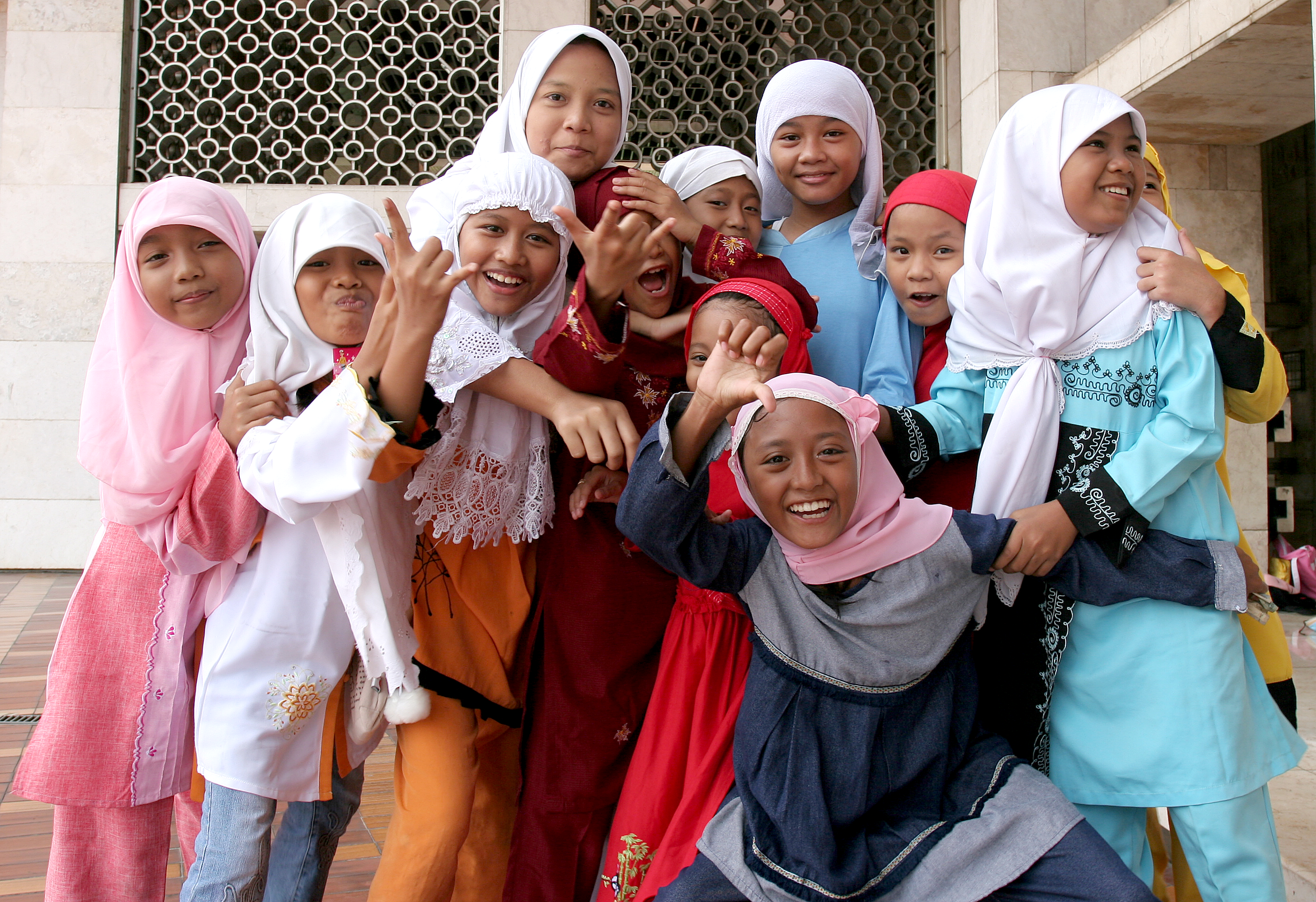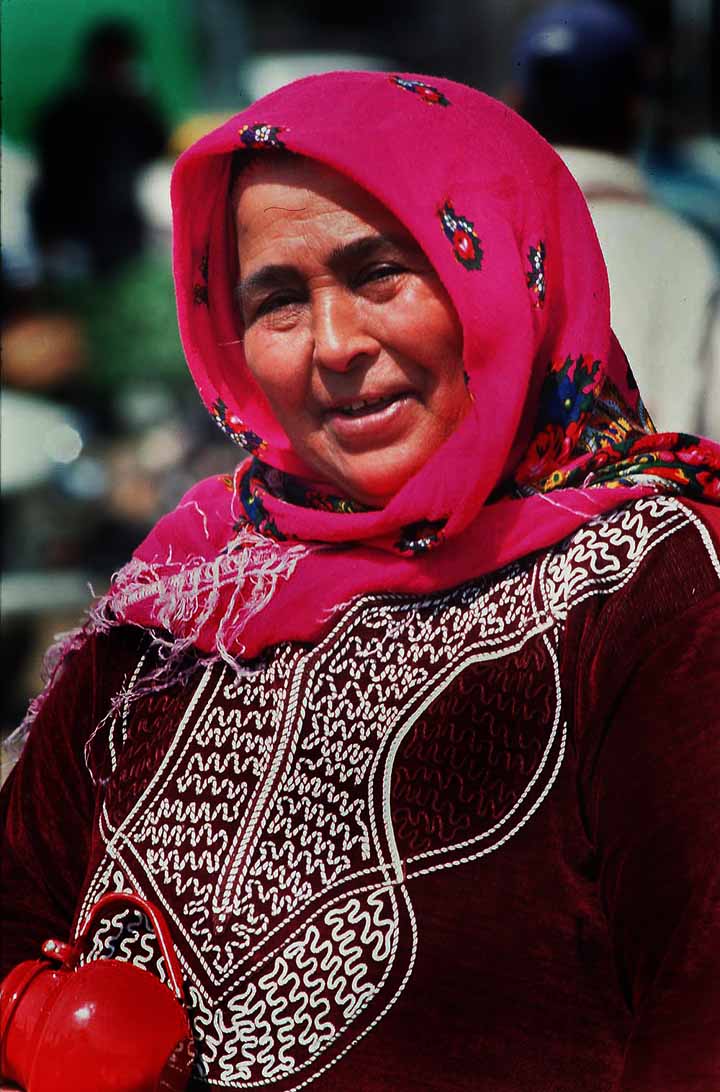|
Women's Prayer In Islam
In Islam, the Woman prayer ( ar, صلاة المرأة) represents the peculiarities, specificities and characteristics of the Islamic prayer (''salat'') that is performed by a woman. Presentation The prayer that a ''woman'' performs in ''Islam'' to draw close to God (''Allah'') Almighty is considered completely equal to the prayer that her brother in humanity and Islam, the man, performs. As for the feminine specificity of a ''Muslim woman'' when she performs prayer, ''Muslim'' jurists ('' fuqaha'') have spoken about it in the chapters on women's matters and what is related to them from all sides, and they collected what is in the Book of God (''Quran'') and the Sunnah of Muhammad, as well as the sayings of scholars and jurists, from hadiths and comments regarding them. Reward The total reward (''thawab'') of a woman who is praying is completely identical to the total reward of a man, because God Almighty will hold her accountable for the amount of prayers she performed on ... [...More Info...] [...Related Items...] OR: [Wikipedia] [Google] [Baidu] |
Tashahhud
The ''Tashahhud'' ( ar, تَشَهُّد, meaning "testimony faith]"), also known as at-Tahiyyat ( ar, ٱلتَّحِيَّات, lit=greetings, link=no), is the portion of the Salah, Muslim prayer where the person Sitting in salah, kneels or sits on the ground facing the ''qibla'', glorifies God, and greets the messenger and the righteous people of God followed by the two testimonials. The recitation is usually followed by an invocation of the blessings and peace upon the prophet known as ''Salawat''. Origins There is a Hadith, thought to be authentic that states: Sunni tradition Hanafi and Hanbali A version attributed to Abdullah ibn Masud is used by Sunni Muslims from both the Hanafi and the Hanbali schools, as well as the non-Sunni Ibadi Muslims: Maliki A version attributed to Umar is used by the Maliki school: Shafi'i A version attributed to Ibn Abbas is used by the Shafi'i school: Shia tradition Jafari The Twelver Shias of the Ja'fari school reci ... [...More Info...] [...Related Items...] OR: [Wikipedia] [Google] [Baidu] |
Postpartum
The postpartum (or postnatal) period begins after childbirth and is typically considered to end within 6 weeks as the mother's body, including hormone levels and uterus size, returns to a non-pregnant state. The terms puerperium, puerperal period, or immediate postpartum period are commonly used to refer to the first six weeks following childbirth. The World Health Organization (WHO) describes the postnatal period as the most critical and yet the most neglected phase in the lives of mothers and babies; most maternal and infant mortality, newborn deaths occur during this period. In scientific literature, the term is commonly abbreviated to P''x'', where ''x'' is a number; for example, "day P5" should be read as "the fifth day after birth". This is not to be confused with the medical nomenclature that uses G P to stand for number and outcomes of pregnancy (gravidity and parity). A female giving birth in a hospital may leave as soon as they are medically stable, which can be as ea ... [...More Info...] [...Related Items...] OR: [Wikipedia] [Google] [Baidu] |
Hadith
Ḥadīth ( or ; ar, حديث, , , , , , , literally "talk" or "discourse") or Athar ( ar, أثر, , literally "remnant"/"effect") refers to what the majority of Muslims believe to be a record of the words, actions, and the silent approval of the Islamic prophet Muhammad as transmitted through chains of narrators. In other words, the ḥadīth are transmitted reports attributed to what Muhammad said and did. Hadith have been called by some as "the backbone" of Islamic civilization, J.A.C. Brown, ''Misquoting Muhammad'', 2014: p.6 and for many the authority of hadith as a source for religious law and moral guidance ranks second only to that of the Quran (which Muslims hold to be the word of God revealed to Muhammad). Most Muslims believe that scriptural authority for hadith comes from the Quran, which enjoins Muslims to emulate Muhammad and obey his judgements (in verses such as , ). While the number of verses pertaining to law in the Quran is relatively few, hadith are ... [...More Info...] [...Related Items...] OR: [Wikipedia] [Google] [Baidu] |
Aisha Bint Abi Bakr
Aisha ( ar, , translit=ʿĀʾisha bint Abī Bakr; , also , ; ) was Muhammad's third and youngest wife. In Islamic writings, her name is thus often prefixed by the title "Mother of the Believers" ( ar, links=no, , ʾumm al- muʾminīn), referring to the description of Muhammad's wives in the Qur'an. Little is known about the early life of Aisha. A preponderance of classical sources converge on Aisha being six or seven years old at the time of her marriage, and nine at the consummation; her age has become a source of ideological friction in modern times. Aisha had an important role in early Islamic history, both during Muhammad's life and after his death. In Sunni tradition, Aisha is portrayed as scholarly and inquisitive. She contributed to the spread of Muhammad's message and served the Muslim community for 44 years after his death. She is also known for narrating 2,210 hadiths, not just on matters related to Muhammad's private life, but also on topics such as inheritance, pi ... [...More Info...] [...Related Items...] OR: [Wikipedia] [Google] [Baidu] |
Mother Of The Believers
Thirteen women were married to the Islamic prophet Muhammad. Muslims use the term ''Umm al-Mu'minin'' ( ar, أم ٱلْمُؤْمِنِين; meaning 'Mother of the Believers') prominently before or after referring to them as a sign of respect, a term derived from Quran 33:6. At the age of 25, Muhammad married his first wife, the widow Khadija bint Khuwaylid. This marriage lasted for 25 years. After her death in 619 CE, he married a total of 12 women over the remaining years of his life. From these wives, two bore him children: Khadija and Maria al-Qibtiyya. All of Muhammad's wives were widows or had divorced, with the exception of Aisha. Muhammad's life is traditionally delineated by two epochs: pre-hijra Mecca, a city in western Arabia, from the year 570 to 622 CE, and post-hijra in Medina, from 622 until his death in 632. Hijrah refers to the mass migration of Muhammad and his followers to Medina due to persecution faced by Muslims in Mecca. All but two of his marriag ... [...More Info...] [...Related Items...] OR: [Wikipedia] [Google] [Baidu] |
Jami' Al-Tirmidhi
Jami at-Tirmidhi ( ar, جامع الترمذي), also known as Sunan at-Tirmidhi, is one of " the six books" (''Kutub al-Sittah'' - the six major hadith collections). It was collected by Al-Tirmidhi. He began compiling it after the year 250 A.H. (A.D. 864/5) and completed it on the 10 Dhu-al-Hijjah 270 A.H. (A.D. 884, June 9). Title The full title of the compilation is (Arabic: الجامع المختصر من السنن عن رسول الله ''ﷺ'' ومعرفة الصحيح والمعلول وما عليه العمل, ''Al-Jāmiʿ al-Mukhtaṣar Min as-Sunan ʿAn Rasūl Allāh ﷺ Wa Maʿrifat al-Ṣaḥeeḥ Wal-Maʿlool Wa Mā ʿAlaihil al-ʿAmal)'' The term ''Jami'' within the title indicates a complete collection covering all eight ''Risalah'' (Allah's message) subjects. The term ''Sunan'' within the title refers to the collection's focus and chapter arrangement based on the particular ''Risalah'' subject, ''ahkam'' (general law). Al-Kattani said: "''The Jamiʿ'' of at-Ti ... [...More Info...] [...Related Items...] OR: [Wikipedia] [Google] [Baidu] |
Al-Tirmidhi
Abū ʿĪsā Muḥammad ibn ʿĪsā as-Sulamī aḍ-Ḍarīr al-Būghī at-Tirmidhī ( ar, أبو عيسى محمد بن عيسى السلمي الضرير البوغي الترمذي; fa, , ''Termezī''; 824 – 9 October 892 CE / 209 - 279 AH), often referred to as Imām at-Termezī/Tirmidhī, was an Islamic scholar, and collector of hadith from Termez (early Khorasan and in present-day Uzbekistan). He wrote '' al-Jami` as-Sahih'' (known as ''Jami` at-Tirmidhi''), one of the six canonical hadith compilations in Sunni Islam. He also wrote ''Shama'il Muhammadiyah'' (popularly known as ''Shama'il at-Tirmidhi''), a compilation of hadiths concerning the person and character of the Islamic prophet, Muhammad. At-Tirmidhi was also well versed in Arabic grammar, favoring the school of Kufa over Basra due to the former's preservation of Arabic poetry as a primary source. Biography Name and lineage Al-Tirmidhi's given name ('' ism'') was "Muhammad" while his '' kunya'' was "A ... [...More Info...] [...Related Items...] OR: [Wikipedia] [Google] [Baidu] |
Hijab
In modern usage, hijab ( ar, حجاب, translit=ḥijāb, ) generally refers to headcoverings worn by Muslim women. Many Muslims believe it is obligatory for every female Muslim who has reached the age of puberty to wear a head covering. While such headcoverings can come in many forms, hijab often specifically refers to a cloth wrapped around the head, neck and chest, covering the hair and neck but leaving the face visible. The term was originally used to denote a partition, a curtain, or was sometimes used for the Islamic rules of modesty. This is the usage in the verses of the Qur'an, in which the term ''hijab'' sometimes refers to a curtain separating visitors to Muhammad's main house from his wives' residential lodgings. This has led some to claim that the mandate of the Qur'an applied only to the wives of Muhammad, and not to the entirety of women. Another interpretation can also refer to the seclusion of women from men in the public sphere, whereas a metaphysical dime ... [...More Info...] [...Related Items...] OR: [Wikipedia] [Google] [Baidu] |
Women In Islam
The experiences of Muslim women ( ''Muslimāt'', singular مسلمة ''Muslimah'') vary widely between and within different societies. At the same time, their adherence to Islam is a shared factor that affects their lives to a varying degree and gives them a common identity that may serve to bridge the wide cultural, social, and economic differences between them. Many women are mentioned in the Quran, but only one is named: Mary, who appears more times in the Quran than in the Bible. According to the Quran, divine grace surrounded Mary from birth, and, as a young woman, she received a message from God through the archangel Gabriel that God had chosen her, purified her and preferred her above all "the women of the worlds".Stowasser, Barbara Freyer, "Mary", in: ''Encyclopaedia of the Qurʾān'', General Editor: Jane Dammen McAuliffe, Georgetown University, Washington DC. Among the influences which have played an important role in defining the social, legal, spiritual, and cos ... [...More Info...] [...Related Items...] OR: [Wikipedia] [Google] [Baidu] |
Muslim Girls At Istiqlal Mosque Jakarta
Muslims ( ar, المسلمون, , ) are people who adhere to Islam, a monotheistic religion belonging to the Abrahamic tradition. They consider the Quran, the foundational religious text of Islam, to be the verbatim word of the God of Abraham (or ''Allah'') as it was revealed to Muhammad, the main Islamic prophet. The majority of Muslims also follow the teachings and practices of Muhammad (''sunnah'') as recorded in traditional accounts (''hadith''). With an estimated population of almost 1.9 billion followers as of 2020 year estimation, Muslims comprise more than 24.9% of the world's total population. In descending order, the percentage of people who identify as Muslims on each continental landmass stands at: 45% of Africa, 25% of Asia and Oceania (collectively), 6% of Europe, and 1% of the Americas. Additionally, in subdivided geographical regions, the figure stands at: 91% of the Middle East–North Africa, 90% of Central Asia, 65% of the Caucasus, 42% of Southeast Asia ... [...More Info...] [...Related Items...] OR: [Wikipedia] [Google] [Baidu] |
Fard
' ( ar, فرض) or ' () or fardh in Islam is a religious duty commanded by God. The word is also used in Turkish, Persian, Pashto, Urdu (''spelled farz''), and Malay (''spelled fardu or fardhu'') in the same meaning. Muslims who obey such commands or duties are said to receive ''hasanat'' (), ''ajr'' () or ''thawab'' () each time for each good deed. ''Fard'' or its synonym ''wājib'' () is one of the five types of ahkam () into which fiqh categorizes acts of every Muslim. The Hanafi fiqh, however, does not consider both terms to be synonymous, and makes a distinction between ''wajib'' and ''fard'', the latter being obligatory and the former slightly lesser degree than being obligatory. Individual duty and sufficiency The Fiqh distinguishes two sorts of duties: * Individual duty or ''farḍ al-'ayn'' () relates is required to perform, such as daily prayer ('' salat''), and the pilgrimage to Mecca at least once in a lifetime if the person can afford the journey ('' hajj'') ... [...More Info...] [...Related Items...] OR: [Wikipedia] [Google] [Baidu] |
Ghusl
( ar, غسل ', ) is an Arabic term to the full-body ritual purification mandatory before the performance of various rituals and prayers, for any adult Muslim after sexual intercourse/ejaculation or completion of the menstrual cycle. The washing is also recommended (i.e. it is ''mustahabb'') before Jumu'ah and Eid prayers, before entering the '' ihram'' in preparation for '' Hajj'', after having lost consciousness and after formally converting. Sunni Muslims also perform the ablution before '' Namaz-e-tawbah'' (Prayer of Repentance). ''Ghusl'' is often translated as "full ablution", as opposed to the "partial ablution" of '' wudu'' that Muslims perform after lesser impurities such as urination, defecation, flatulence, deep sleep, and light bleeding. It is a ritual bath. Types by purpose Ghusl becomes obligatory for seven causes, and the ''ghusl'' for each of these different causes has different names: *''Ghusl Janabat'' is ''ghusl'' performed after sexual intercourse/ejac ... [...More Info...] [...Related Items...] OR: [Wikipedia] [Google] [Baidu] |

.jpg)





